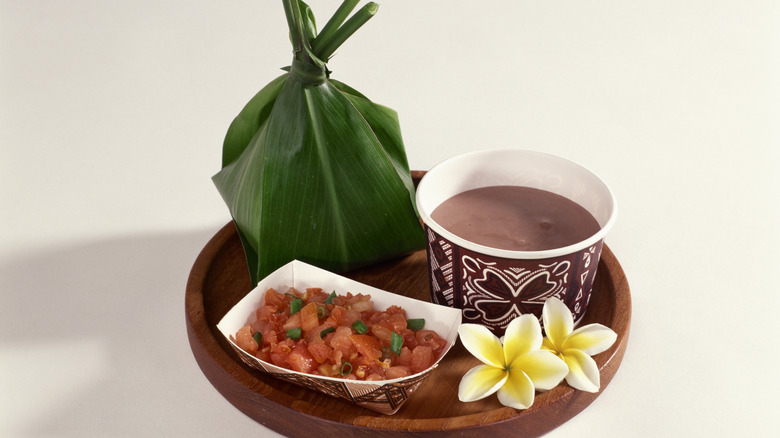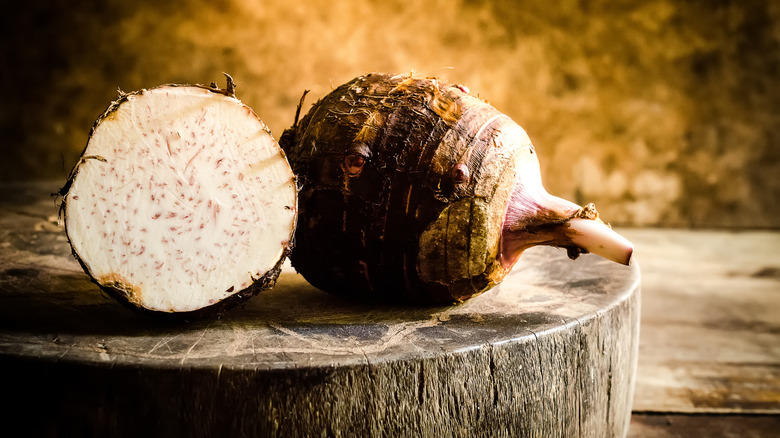Why Hawaii's Poi Is Considered A Sacred Dish
There are some foods that are more than just a mealtime staple; they're a connection to culture and the richness of the past. For example, the French baguette achieved a cultural milestone when it was awarded UNESCO Heritage status in 2022. Over in Iceland, hákarl is celebrated as a delicacy, a heritage food, and an important connection to the nation's history. Look to Hawaii, and you'll find that it has its own food that serves as a cultural touchstone linking past and present, and that's poi.
Poi has a pretty incredible history. When intrepid Polynesian settlers rooted in Hawaii between 1000 and 1200, they brought some staple crops with them, including taro. Taro was then turned into poi, a sticky, sour, dough-like food that became integral to life on the islands. Traditionally made by crushing steamed taro roots with stones to create a paste that's then left to ferment — extending its shelf life — poi (and taro root) have been found to be a serious nutritional powerhouse. Full of fiber, vitamins, and nutrients, it's been linked to lowering the risk of heart disease while promoting gut health and helping to manage blood sugar.
Given poi's history and importance in Hawaii's establishment, it's not surprising that it's featured in the islands' spiritual history and culinary past. Legend says that the taro root was the first child of the sky, Wakea, and the goddess Ho'ohokukalani. The child, however, was stillborn, buried, and returned as the taro root to provide sustenance to the humans that followed. This spiritual connection adds a layer of intrigue and respect to the consumption of poi.
Taro's ancient origins connect it to the origins of humankind
Taro has been a crucial foodstuff in the Solomon Islands for around 28,000 years and has been raised as a domesticated crop for around 10,000 years. It makes sense, then, that the story of taro and poi became intertwined with the origins of human life. (Interestingly, it's also one of the foods that can potentially help humankind survive climate change.)
After Wakea and Ho'ohokukalani buried the child that became Taro, they had another child. Haloa was named after his older brother and was nourished by the plant that grew from him. Haloa is considered the ancestor of the Hawaiian people, and even today, the story remains an important lesson on the responsibilities of family to care for each other. That's reflected in the language, too: 'ohana refers to both the members of a family and taro shoots.
Tradition also says that the spirit of the firstborn child still exists within the taro, and those eating poi should conduct themselves in a way that shows respect for the spirit that sustained human life since the beginning. In another tradition slightly adjacent to this one, taro is also seen as an aspect of the Polynesian creation god Kāne. He was worshiped as the primordial giver of life and was connected to not only taro, but bamboo and sugar cane as well.

